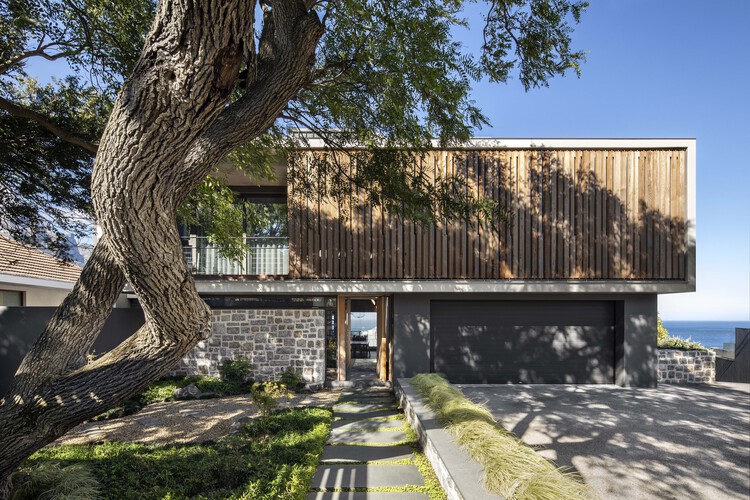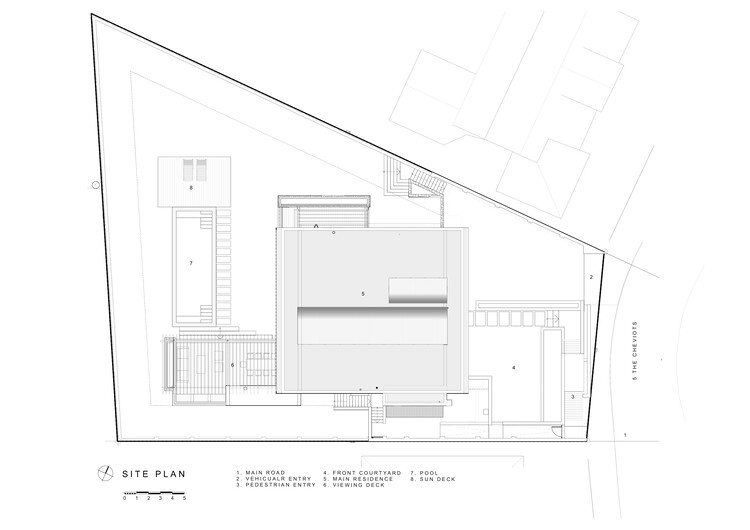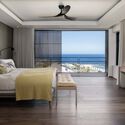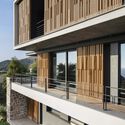Camps Bay Home / Malan Vorster Structure Inside Design
Camps Bay House / Malan Vorster Architecture Interior Design


Text description provided by the architects. This residence in Camp’s Bay is characterized by a steep slope from street level towards the Atlantic Ocean in the west with solar glare, has a backdrop from Lion’s Head to The Twelve Apostles, exposure to harsh South-Eastern winds.



The building responds to the streetscape with two stories. The building is set back from the street in order to preserve existing mature trees, which are part of the established garden and act as focal points. Building mass is expressed in simplified robust forms and pure geometric shapes, and vertically arranged in a tripartite stacking diagram:


- A natural stone plinth grows out of the site slope and connects with the lower garden. It accommodates the guest suite, family bedrooms, tv lounge and covered patio.
- The middle level engages with the street entrance and is the social nucleus of the house. Sliding doors allow outdoor and indoor living spaces to blend. The elevation above the slope of the site affords sea and Twelve Apostle views. An entertainment terrace with timber pergola is projected into the view.
- A first-floor hovering cube; two fronts are open to views either side, and two sides predominantly kept solid to afford privacy from neighbours. It is a container for the parent’s zone; bedroom and private lounge (with sea views), and study and bathroom-dressing suite (with views of Lion’s Head).


An atrium is carved out of the two top levels and organises the progression of spaces. The experience of light along the route plays an important role; a curved light scoop roof reflects southern light into the atrium, ensuring a bright interior.

Climatic control and privacy are provided with a pivoting adjustable screen on the street side, sliding shutters to regulate western exposure, and pergolas to provide shade. Building mass is arranged to shelter the internal and external spaces from the South Easter. Shutter detailing, with splays cut into the timber, explored the patterned filtering of light as a design opportunity.






